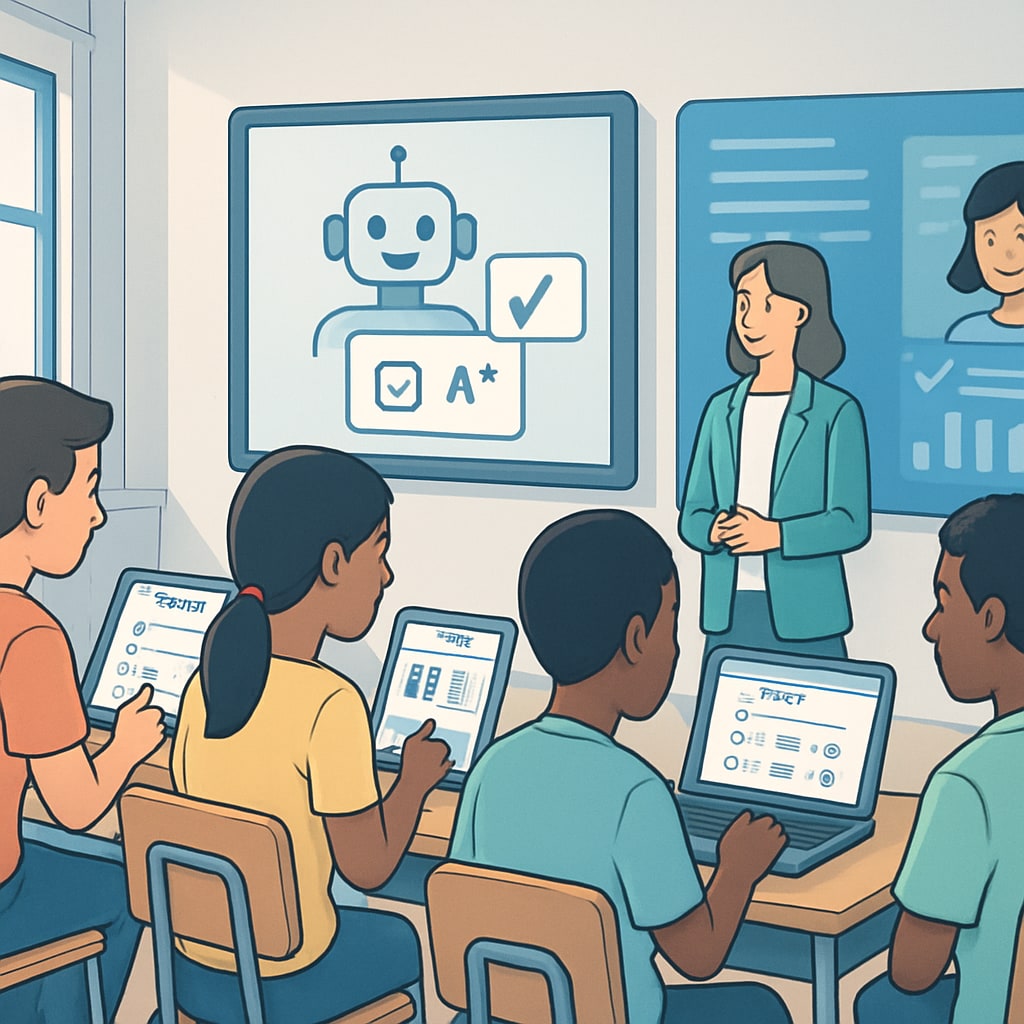The rise of artificial intelligence (AI) has significantly impacted various industries, including education. In this transformative era, traditional K12 competitive exams and employee selection systems face increasing scrutiny regarding their effectiveness and relevance. These systems, designed in pre-digital times, now require a reimagined approach to meet the demands of modern talent evaluation and to nurture creativity and critical thinking in students.

Challenges of Traditional Competitive Exams in the AI Era
Competitive exams have long been the cornerstone of student evaluation, focusing primarily on rote memorization and standardized testing. However, these methods often fail to assess key skills such as problem-solving, adaptability, and innovation—qualities that are increasingly valued in the AI-driven workplace. Moreover, with AI’s ability to automate complex tasks, the emphasis on memorization becomes redundant.
For example, advances in AI-powered tools like ChatGPT and Wolfram Alpha allow students to access vast knowledge instantly. While this democratization of information is beneficial, it also exposes gaps in traditional testing methods that do not account for technological proficiency or creative application of knowledge.
AI-Powered Assessment: A Paradigm Shift
To address these challenges, educators and policymakers must embrace AI-driven solutions for student evaluation. AI-powered assessments can analyze complex data, offering deeper insights into a student’s strengths and weaknesses. For instance, adaptive learning platforms like Khan Academy use AI algorithms to personalize learning experiences, ensuring students receive tailored feedback.
Additionally, AI can facilitate project-based assessments, wherein students work collaboratively to solve real-world problems. These methods not only improve engagement but also prepare students for the dynamic demands of modern workplaces.

Integrating AI into Employee Selection Systems
Aside from education, traditional employee selection methods are also undergoing transformation due to AI. Where previous systems focused on academic achievement and standardized metrics, AI enables recruiters to evaluate candidates based on multifaceted criteria. For example, AI-driven tools such as LinkedIn Talent Insights assess soft skills, professional networks, and project accomplishments.
By correlating educational outcomes with workplace performance, AI can bridge the gap between K12 education and employee selection. This integration ensures that students develop skills relevant to their careers, fostering long-term success.
Recommendations for Reforming K12 Competitive Exams
Reforming competitive exams in the AI era requires a holistic approach. Below are key recommendations for educators and policymakers:
- Incorporate AI-driven assessments to evaluate creativity, collaboration, and critical thinking.
- Shift focus from rote memorization to problem-solving and project-based learning.
- Train educators to use AI tools effectively, ensuring seamless integration into curricula.
- Develop ethical guidelines for AI usage to protect student data and ensure fairness.
- Enhance collaboration between educational institutions and industries to align skills development with workforce needs.
As a result, these reforms can create an education system that not only adapts to technological advancements but also empowers students to thrive in a competitive, AI-driven world.
Conclusion: In the era of artificial intelligence, traditional competitive exams and employee selection systems must evolve to remain relevant. By embracing AI-powered assessment tools and fostering creativity, educators and policymakers can prepare students for the challenges and opportunities of the future. The time to rethink and reform is now.


